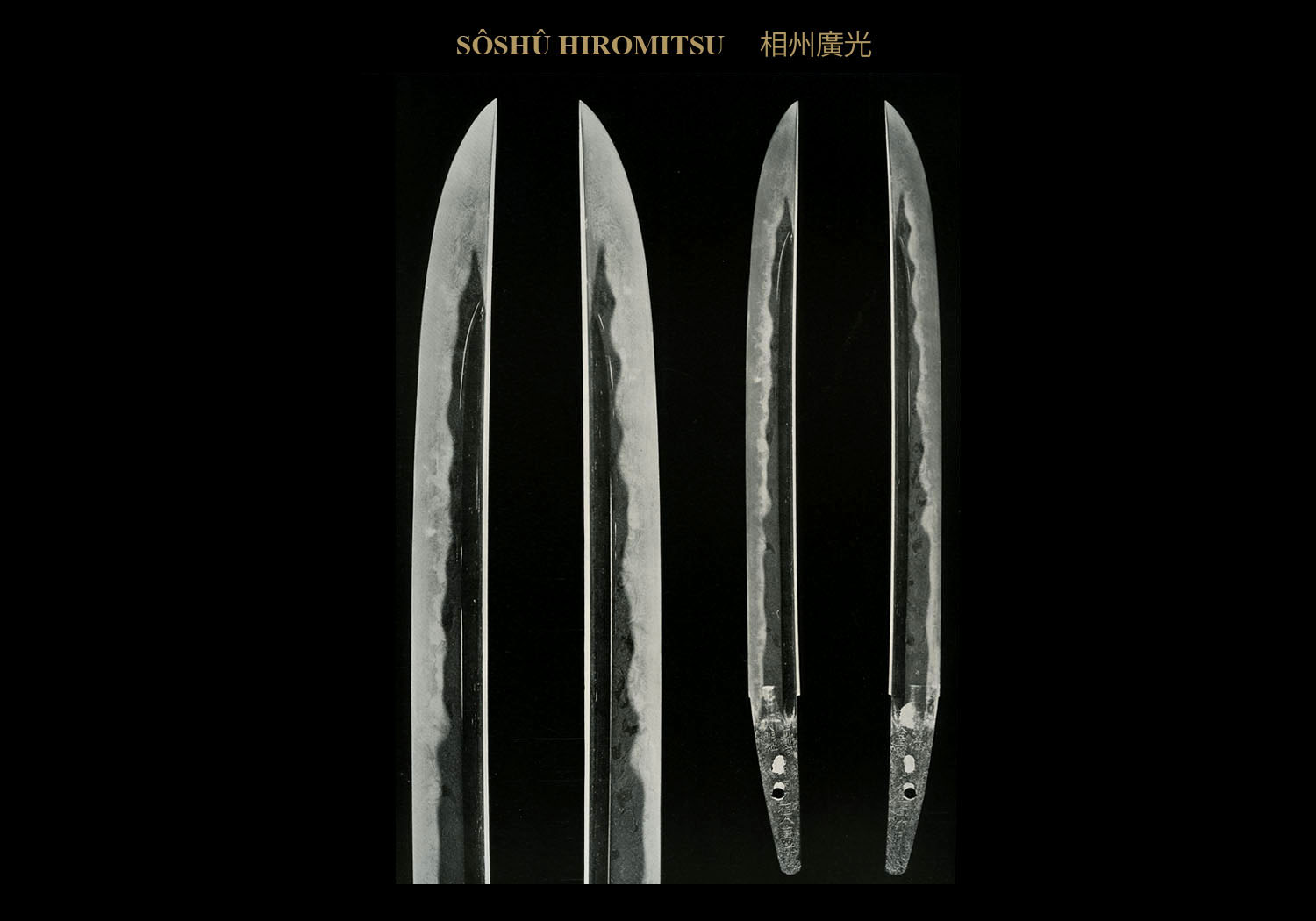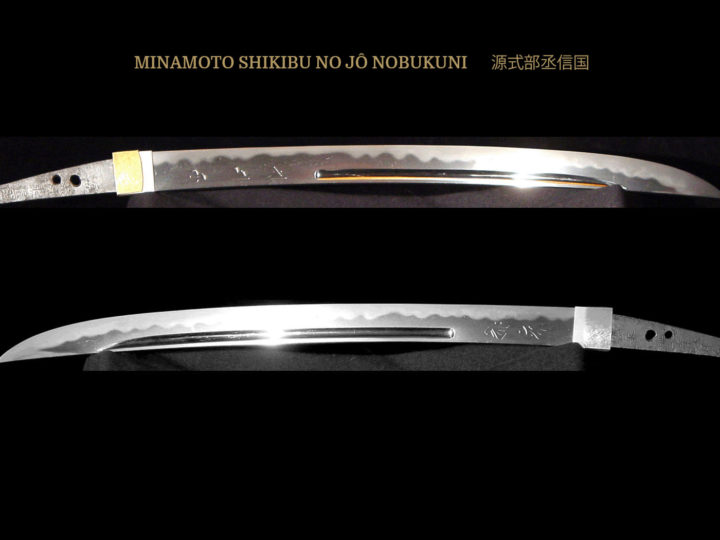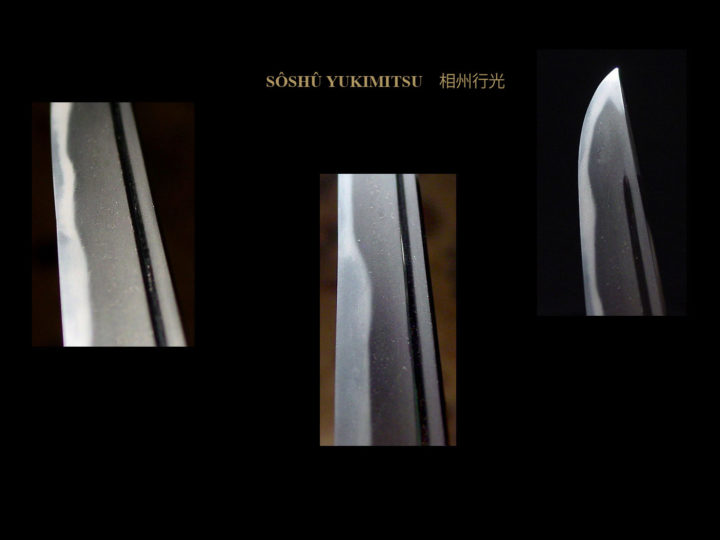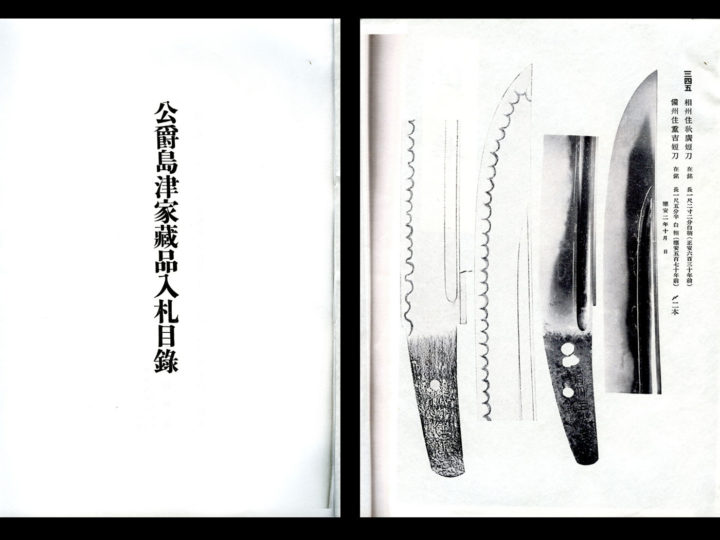
Hiromitsu (廣光), according to the old authorized books, Kodensho and Kokon Mei-zukashi, is unanimously considered a student of Masamune (正宗). Most of his extant examples carry the dates of Bunwa (文和1352-1355), Enbun (延文1356-1360), Kôan (康安1361) and Teiji (貞治1362-1368), but the earliest date goes back to the first year of Kan-ô (觀応1350). The mei inscriptions on the works in the Kanno days are all nagamei or long mei inscriptions. In terms of the order of Masamune’s (正宗) disciples, Hiromitsu (廣光) is surmised to have come next in line after Sadamune (貞宗).
There are a couple of examples of ni-ji mei (two-character signature) which seem to be of earlier and superior workmanship to the later naga-mei examples. One of these blades is tempered in Hiromitsu’s (廣光) typical hitatsura style and the other is done in chu-suguha. It is interesting that one of these two blades is done in the chu-suguha style that is the traditional Sôshû hamon that has been passed down since Shintôgo Kunimitsu (新藤五国光). This has led to the current theory that there were, in fact, two generations of smiths by this name with the first generation being the direct student of Masamune (正宗) and the second as having worked closely with Sadamune (貞宗). As with most theories of this sort, all the facts are not in and further research and debate are required.
Most of Hiromitsu’s (廣光) remaining works are ko-wakizashi or sunnobi tantô. The shape is wide, has a mitsu-mune and a fairly stretched length with almost no curvature. The steel surface is of itame mixed with chikei as well as rather rough and course configurations of nie grains. The temper-line widens gradually as it approaches the monouchi area. Plenty of kinsuji and sunagashi are found within the hamon. The bôshi is irregular and shows a long turn-back.
There are a few tantô and almost no surviving signed examples of his tachi. In fact, even as late as the late 1970’s there were no known signed examples of Hiromitsu (廣光) tachi in existence. Since that time one very important tachi with an exceedingly rare signature of Hiromitsu (廣光) was discovered in the states and was exhibited in Japan to a great deal of fanfare.
SUGATA: As noted most of the surviving examples are ko-wakizashi which are of a wide mihaba. They are done in hira-zukuri style with a mitsu-mune. The sori will be very slight. Tachi will be in the style of the Yoshino Period with shallow sori, wide mihaba, and very little, if any, hira-niku. The kissaki will be long giving the tachi a very strong and sturdy appearance.
JITETSU: The steel surface texture is itame (usually large) mixed with o-mokume. There will be chikei as well as a rough and course configuration of ji-nie. Most of his works (especially the tanto and wakizashi) will be done in hitatsura.
HAMON: The hamon is basically choji mixed with gunome but, as noted, ashi, yo, tobiyaki, and outstanding muneyaki will combine to form the classic hitatsura style of temper. The hamon will contain strong nie grains forming kinsuji and sunagashi. Hiromitsu and Akihiro are considered to be the creators of the hitatsura temper pattern.
BÔSHI: The bôshi will be irregular (midare-komi) with a long kaeri. While they usually tend to be nie-kuzure, occasionally they will approach ichimai in shape.
HORIMONO: Hiromitsu was excellent at carving horimono. Most of his extant works have it in one form or another. Horimono will be mostly hi or one sort or another, i.e., bo-hi, bo-hi with soe-hi, futatsu-hi, etc. There will also be various types of ken carvings and or bonji.
NAKAGO: Surviving nakago are made short in the tanagobara style with the tip in kengyo. The back of the nakago is square. The file marks will be kiri. His long signature will read: Sagami (no) Kuni Junin Hiromitsu (相模国住人廣光) with the signature showing flattening in the middle. The two-character signature of Hiromitsu (廣光)will have the tips of the characters emphasized.
MEI:
SAGAMI no KUNI JUNIN HIROMITSU (相模国住人廣光)
SAGAMI no KUNI JUNIN SAEMON HIROMITSU (相模国住人左兵門廣光)
HIROMITSU (廣光)





